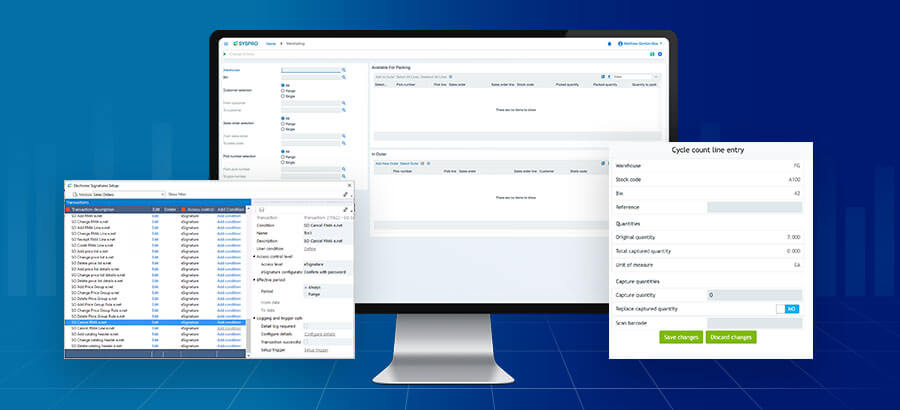As a technology executive, you have probably undertaken two digital transformations in 2020 already.
- Using technology to convert employees to remote work.
- Implementing systems to accommodate the new ways customers interact and buy.
What would you do if you could do a complete transformation – a reboot? In the same way that rebooting a computer changes the way it is currently operating, how would you reboot your business using technology to start again, or do something again in a new and interesting way?
When Marc Andreesen made his radical call in 2011 to modernize business in “Why software is eating the world” [View Article] it was considered a little far-fetched. Now his argument that companies in every industry should assume that there will be a software revolution is no longer a vague prediction, but is becoming a reality.
How to do a reboot
There is a 5 step process to reboot your business:
- Review – consider what did and did not work before, what has been learned, what was missed.
- Re-assess – options based on the understanding that a reboot requires a mind-set change.
- Innovate – identify new strategies and options.
- Commit – define your destination, create a strategy and then implement it. Importantly, re-engage with your staff to get their full buy-in and contributions to the strategy.
- Reboot – take the actions needed to prioritize and realign processes, technology and the workforce to reach the strategic objectives.
While digital transformations have been called difficult, complex, and long-term, your experience in 2020 will have shown you that it can be done, and in a shorter time than you would think, if everyone is prepared to do the work to get it done. The rise of technology to handle the next normal is now underway and will require open-mindedness, boldness, and willingness to make the necessary investments and efforts needed.
- Review
One approach to reviewing what needs to change is to determine the “low hanging fruit”, as these be the easiest and quickest transformations to action. But by working with other members of the executive team, a CIO can identify the initiatives that align with key corporate goals, and then prioritize which ones are critical, where the impact is high and where ROI is measurable.
Then there is the element of “stickiness”. A McKinsey report showed that some changes are more likely to stick, while there will be others that won’t last and will return to the status quo pre-COVID [View Source]. A CIO obviously should select the more sustainable transformations.
Over the years, operational processes and practices have built up, and various systems have been added. These processes have made many companies complex, which impedes the delivery of digital solutions. The CIO must therefore attack this complexity. One of the main problems is poorly managed or ill-defined processes. To simplify the business requires defining the business processes that are most essential to delivering customer value and streamlining them to provide an improved customer experience across multiple channels.
- Innovate
According to the McKinsey report, failure to recognize and prioritize transformations was a reason why many organizations didn’t implement changes before the crisis. That has all changed.
Some major technology transformations that businesses will need for the next normal are those that:
- support a secure remote work environment
- promote a resilient and agile organization
- can be implemented via the cloud
- help to automate processes
- enable dynamic decision making
For manufacturers who are challenged to find transformations with a quick ROI, consider implementing cheap IoT devices on the shop floor to collect data that brings greater visibility into the production process to improve planning and scheduling, and track work-in-progress.
In the area of dynamic decision making, manufacturers can look at how technology can:
- assist in identifying changing customer buying patterns quickly;
- find alternative supply channels if supply chain problems occur (as they did in 2020).
One area of technology receiving significant attention is AI. Applications enhanced with AI are delivering business benefits in several areas.
- Better products through using AI in R&D and quality control.
- Improved predictive maintenance through AI’s capability to analyze data and identify actionable insights to improve asset use.
- Customer relationship management systems that use AI to provide predictive analytics to gain a better understanding of customers.
- Using AI technology in conjunction with supply chain and inventory management systems to streamline procurement, handling and delivery, an improve demand accuracy.
- Applying AI to financial applications for the prevention and detection of fraud.
- Finally, the leading AI application today, is chatbots that assist with both customer service and employee questions [View Source].
- Commit
As a CIO, when you consider technology that will shift the organization to the next normal, you also need to understand the skills necessary for success.
Important contributors to any transformational success are building new skills to complement collaborative technologies and understanding how to work with new technology like AI. In the technical area, there are specific shortages of AI-related talent and skills which can act as major constraints.
If your reboot is going to succeed, you must also engage with employees to get commitment at every level so they can participate and contribute to changes.
- Reboot
When it comes to implementing your reboot, you need to define and execute the right steps to avoid major failure. In a recent book, former Proctor and Gamble executive Tony Saldanha proposes a five-stage process to guide businesses through the transformation process. (Why Digital Transformations Fail – View Article ).
Stage 1 – Foundation. Upgrade technology to the latest digital platforms, automate internal processes, and digitalize operations. This should be done in small iterative steps to avoid major implementation failure.
Stage 2 – Siloed innovation. Individual functions or divisions start to embrace disruptive technologies to create new products, processes or business models, but they are siloed, with no company-wide impact.
Stage 3 – Partially synchronized transformation. The enterprise now has a mix of old and new products, processes and business models, without any overall digital infrastructure or innovation culture that is sustainable. Therefore at this stage, the business focuses on managing the required organizational and cultural changes.
Stage 4 – Fully synchronized transformation. An organization-wide digital infrastructure, new business model, and culture is in place. While the firm may now be delivering better customer results, innovative digital products, and greater operational efficiency, the transformation is one major change away from being disrupted. This is why it is imperative “to make digital capabilities and an agile innovative culture an ongoing integral part of the enterprise.” Create a strategy to address re-skilling for the digital era and stay up-to-date with the evolving technology landscape and potentially disruptive innovations.
Stage 5 – Living DNA. This is where the transformation becomes sustainable. All areas of the business have a determined focus on innovation, a spirit of continuous evolution, and a shared common purpose.
Using an ERP to help reboot
ERP applications help to bring together all aspects of business operations and reporting on one platform. If you are looking for those Stage 2 benefits, an ERP solution can improve inventory performance, manage and reduce costs, streamline processes, and ensure manufacturing operations are under control.
When looking at Stage 4 objectives, running a manufacturing business with a modern ERP system provides data collection interfaces to shop floor operations and IoT devices that can offer insights into the production process. With a quality management system, a more integrated approach to quality planning and quality operations is possible that can improve quality and reduce the cost of quality control. An ERP system improves the management of materials throughout the company value chain, allowing for the coordinated delivery of components, identifying materials consumed, and identifying finished goods for delivery. It is also critical for managing traceability.
Conclusion
The notion of a tipping point for digital transformation isn’t new, but the COVID-19 pandemic seems to be a tipping point of historic proportions. The pandemic has given many people a glimpse of a future world, in which digital has become central to every interaction, from workforce practices, to automation, supply chain flexibility, and shop floor management.
The McKinsey report noted that half of the companies they surveyed now say they are investing in technology for competitive advantage or refocusing their entire business around digital technologies. Not only that, but those organizations that have experimented and invested more in new digital technologies are twice as likely to report larger revenue growth as companies that did not. Conversely, those who were behind in implementing digital technologies (40 percent of them) had revenue reductions.
Unfortunately, many mid-size manufacturers are still making do with basic tools and not using the technologies to help them transform. But just because they are middle-sized doesn’t mean they should be restricted from using more advanced technology. Some solutions will deliver those technologies that are also appropriate for their organization, in terms of size, customization, deployment, features, time and budget.
The important lesson seems to be don’t get left behind. If you aren’t looking at technologies to make your business more digitalized, the chances are that your colleagues and competitors are biting the bullet and going ahead with it.







